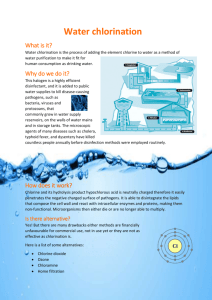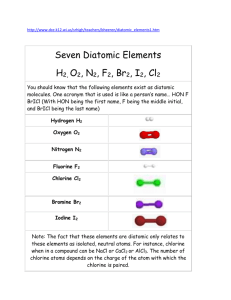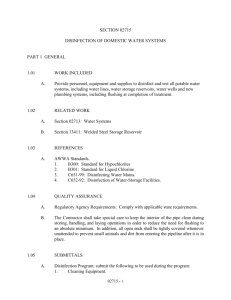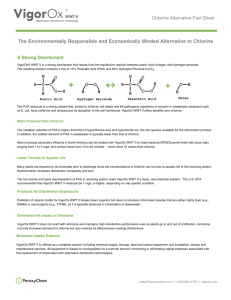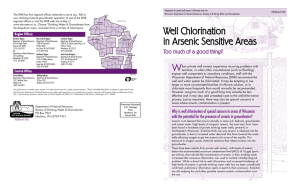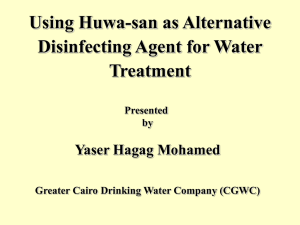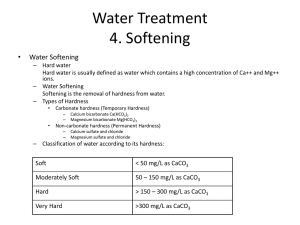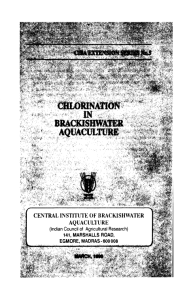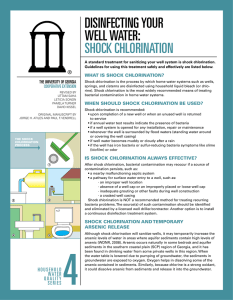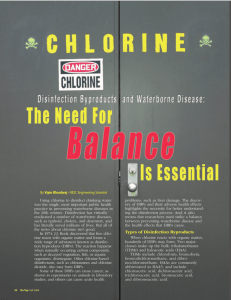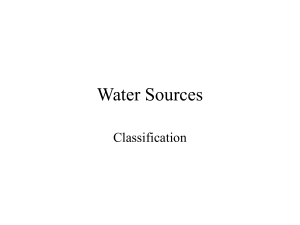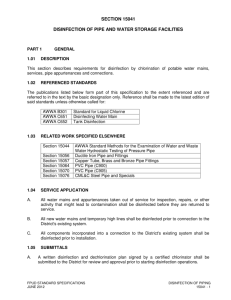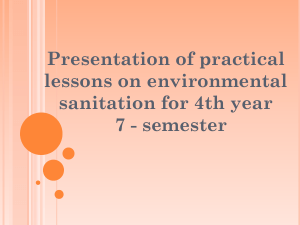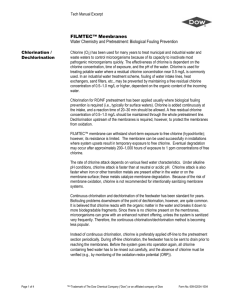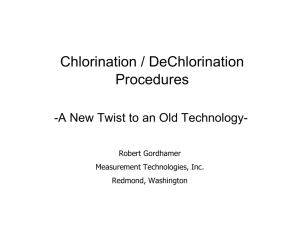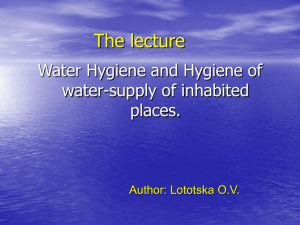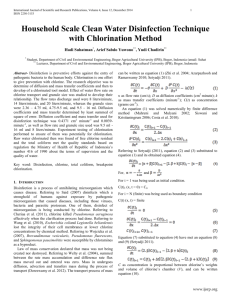Chemical Oxidation, Precipitation and disinfection
advertisement
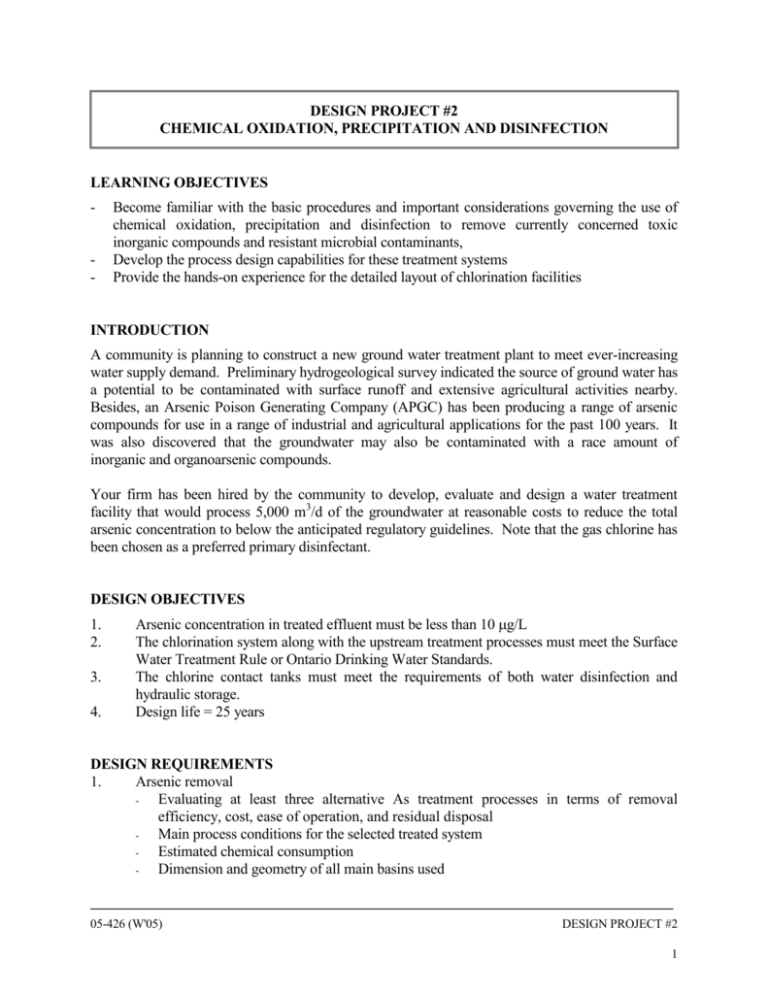
DESIGN PROJECT #2 CHEMICAL OXIDATION, PRECIPITATION AND DISINFECTION LEARNING OBJECTIVES - - Become familiar with the basic procedures and important considerations governing the use of chemical oxidation, precipitation and disinfection to remove currently concerned toxic inorganic compounds and resistant microbial contaminants, Develop the process design capabilities for these treatment systems Provide the hands-on experience for the detailed layout of chlorination facilities INTRODUCTION A community is planning to construct a new ground water treatment plant to meet ever-increasing water supply demand. Preliminary hydrogeological survey indicated the source of ground water has a potential to be contaminated with surface runoff and extensive agricultural activities nearby. Besides, an Arsenic Poison Generating Company (APGC) has been producing a range of arsenic compounds for use in a range of industrial and agricultural applications for the past 100 years. It was also discovered that the groundwater may also be contaminated with a race amount of inorganic and organoarsenic compounds. Your firm has been hired by the community to develop, evaluate and design a water treatment facility that would process 5,000 m3/d of the groundwater at reasonable costs to reduce the total arsenic concentration to below the anticipated regulatory guidelines. Note that the gas chlorine has been chosen as a preferred primary disinfectant. DESIGN OBJECTIVES 1. 2. 3. 4. Arsenic concentration in treated effluent must be less than 10 g/L The chlorination system along with the upstream treatment processes must meet the Surface Water Treatment Rule or Ontario Drinking Water Standards. The chlorine contact tanks must meet the requirements of both water disinfection and hydraulic storage. Design life = 25 years DESIGN REQUIREMENTS 1. Arsenic removal Evaluating at least three alternative As treatment processes in terms of removal efficiency, cost, ease of operation, and residual disposal Main process conditions for the selected treated system Estimated chemical consumption Dimension and geometry of all main basins used ─────────────────────────────────────────────────────────────────────────────── 05-426 (W'05) DESIGN PROJECT #2 1 2. Chlorination: gas chlorine •. Total chlorine residual ≥ 1.5 mg/L •. A complete chlorine feed system including, but not limited to: » Weight scales » Vacuum regulators » Chlorinators » Chlorine injectors » Chlorine diffusers » Chlorine leak detector » Residual chlorine analyzers •. Detailed layout of chlorine storage and feed rooms •. Chlorine contact tanks with the detailed baffle installations » Minimum numbers of the clearwells: 2 » Hydraulic capacity: 24-hr maximum day flow » Minimum T10/T ≥ 0.3 •. The daily consumption rates of all the chemicals •. A list of the safety measurements and associated equipment to handle the chlorine 3. You are not to provide the piping and control system design. BASIC DATA 1. 2. 3. Some raw ground water quality As 0.5 mg/L pH 6.4 - 10.5 Fe 2 mg/L Chlorine decay rate constant in the filtered water: 1.5 per day The concentration of ammonia in water is negligible. REPORT 1. 2. 3. 4. 5. 6. 7. Process diagram for arsenic removal and disinfection Complete chlorination feed process diagram A detailed summary table for your recommended design Brief summary of start-of-art technologies reported for As removal Detailed calculation as appended Provide a thorough discussion of the safety and environmental issues of chlorination in water treatment Discuss the strategies/alternative technologies you would consider to improve your current design (include the bench and pilot tests needed for the design). ─────────────────────────────────────────────────────────────────────────────── 05-426 (W'05) DESIGN PROJECT #2 2


